The Fascinating Feathered Friends in Bengal
Dr Tamal Kanti Roysarkar*
My photographic journey started in 2000 after an official course in photography from the Photographic Association of Dumdum (PAD). That was the time when we used to shoot in film cameras and do the developing and printing at our home studios. I was lucky to have been mentored by the legendary Late Shri Benu Sen.
I was always drawn to landscapes, even as a child when I used to learn painting, and the camera introduced to me a whole new world. Now, with the introduction of digital camera and various photo-editing software, creativity has taken the front seat. Being instantaneous, exact and perfectly reproducible, photographs have earned the dimension that paintings lack, thus paving the way for a new medium of art. Though there are many genres in photography, my interest lies in pictorial photography of landscapes and wildlife, pictures which are aesthetically appealing and communicative. The advent of affordable zoom lenses by Nikon and Canon made bird and wildlife photography easier and more accessible to photo enthusiasts; I was no exception.
Bird photography is not just taking up a camera and snapping away. I was drawn to bird photography primarily because of the subjects (the birds) and their habitat. Our feathered friends are extremely beautiful to look at with different identification marks of their male and female counterparts and their juveniles. Hence, an anatomical knowledge of the birds and their habitat is a prerequisite for meaningful bird photographs. As a genre, bird photography is difficult and quite challenging, not every photographer’s cup of tea, because by the time one has composed the shot, the bird would have changed places, assumed a different posture, gone out of focus or would have simply flown away. Excellent reflexes, mastery of the equipment and perfect knowledge of photographic techniques is essential for interesting pictures. Not just mastery over the camera and lenses, it is equally important that one should know the various nuances of these fascinating creatures, their calls, feeding habits and behaviour. A photographic tip—the eyes of the birds should be obvious in portrait shots, and they should be in sharp focus.
West Bengal, home to a lot of endemic flora and fauna, has one of the highest avian biodiversity in the Asian subcontinent. The common birds seen here are woodpeckers, various types of ducks, bulbuls, common myna, storks, kingfishers, hornbills, barbets, babbler, drongo, dove, egrets, parakeet, bee-eaters, sunbird, baya weaver, oriole, etc. West Bengal is home to various migratory birds like Bar-headed goose, Pochards, Northern pintails, Ruddy Shelducks, etc. In this photo-essay, I present six birds of West Bengal accompanied with photographs and a brief narrative on the birds, description of the location and how I clicked their photos.

RUFOUS-NECKED HORNBILL
Rufous-necked hornbill is the most endangered and least studied of the nine hornbill species in India. Commonly seen in Arunachal Pradesh, this species is found in West Bengal in Latpanchar. About 117cm (46in) long, it is among the largest hornbills. The underparts, neck and head are rich rufous in the male, but black in the female. There are less than 10,000 adults left in the wild. Though largely hunted in the past, recent conservation efforts have downgraded the IUCN (International Union for Conservation of Nature) status from ‘vulnerable’ to ‘near threatened’.
I took this shot in the morning when the adult male came in to feed the nesting female. Normally, they do it three times a day, bringing in seeds in their mouth and feeding it to the females one by one. During nesting, the female seals herself in the nest cavity for three to four months, leaving only a slit open through which the male delivers food to her and the chicks. The female exposes her beak through the slit to take the food. I used to visit their nesting area for several days at a stretch, noting the activities of the male and feeding habits. The arrival of the male is accompanied by the distinctive sound of his flapping wings. It used to be a tiresome wait, often for hours at a stretch, but a very rewarding one every time. On a particular morning, the bird came up and after feeding his mate spent some time cleaning his beak, giving me a chance to photograph him.
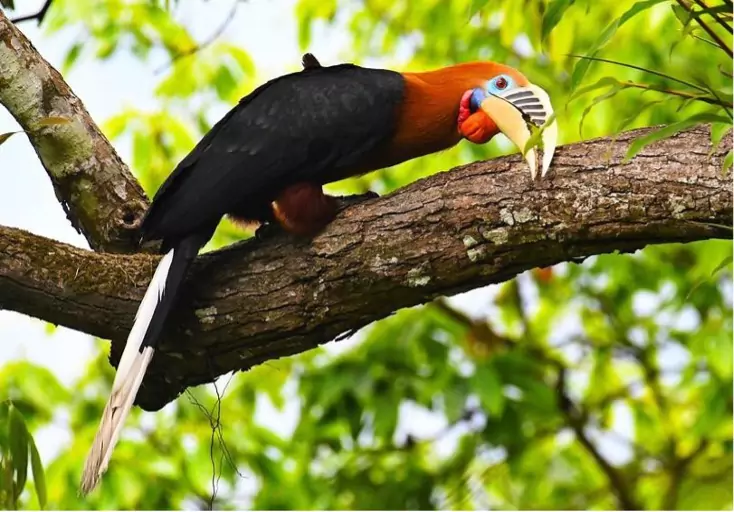

EGRETS
These herons, generally long-legged wading birds, have white or buff plumage, and develop fine plumes (usually milky white) during the breeding season. Egrets are not a biologically distinct group from herons and have the same build. Of the 12 various types of egrets/herons, the common types are Great Egret, Little Egret and Cattle Egret which are found all over West Bengal.
Cattle Egret is a white bird adorned with buff plumes in the breeding season. It nests in colonies, usually near bodies of water and often with other wading birds
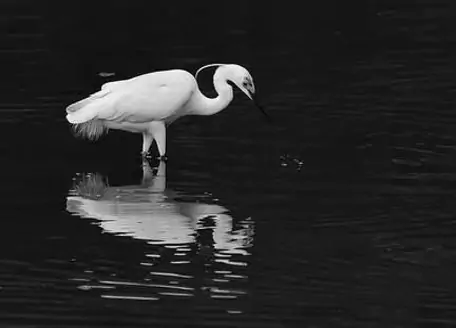

In 1953, the Great Egret in flight was chosen as the symbol of the National Audubon Society, which was formed in part to prevent the killing of birds for their feathers. The National Audubon Society is an American non-profit environmental organization dedicated to the conservation of birds and their habitats. Located in the United States and incorporated in 1905, Audubon is one of the oldest of such organizations in the world.
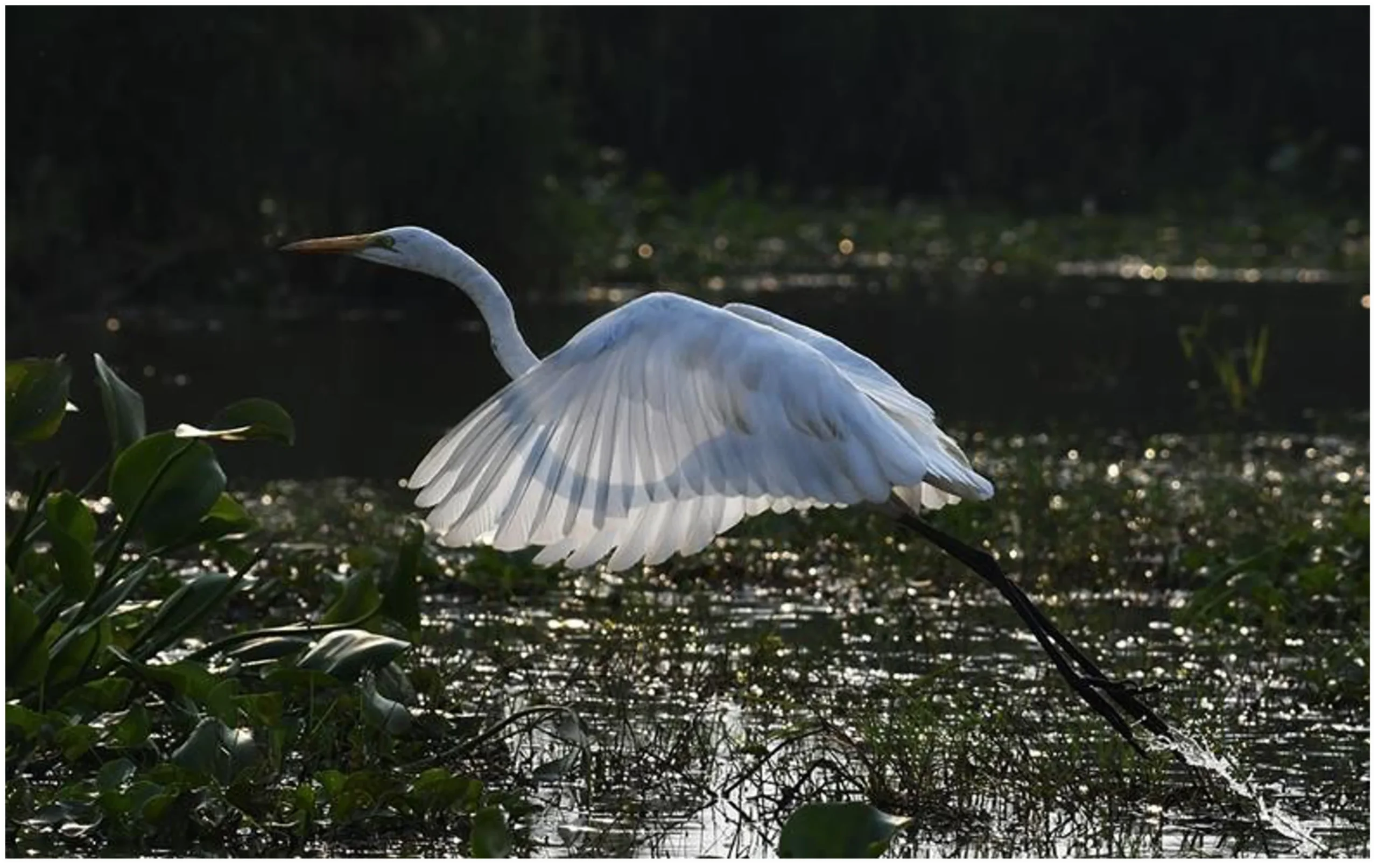
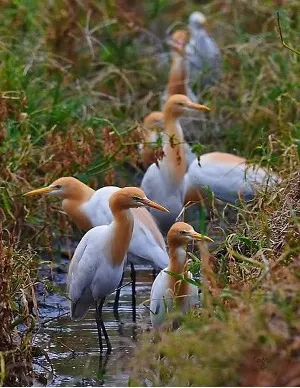

KINGFISHERS
These small to medium-sized, brightly coloured birds with a cosmopolitan distribution can be found in deep forests near calm ponds and small rivers. The family contains 116 species, and all kingfishers have large heads, long, sharp, pointed bills, short legs and stubby tails. Most species have bright plumage with only small differences between sexes. Most species are tropical in distribution and a slight majority is found only in forests. tropical in distribution and a slight majority is found only in forests.
The Common Kingfisher, also known as the Eurasian Kingfisher and River Kingfisher, is a small kingfisher (size of a sparrow) with the typical short-tailed, large-headed profile; it has blue upperparts, orange underparts and a long bill. The female is identical in appearance to the male except that her lower mandible is orange-red with a black tip. It feeds mainly on fish, caught by diving, and has special visual adaptations to enable it to see prey under water.
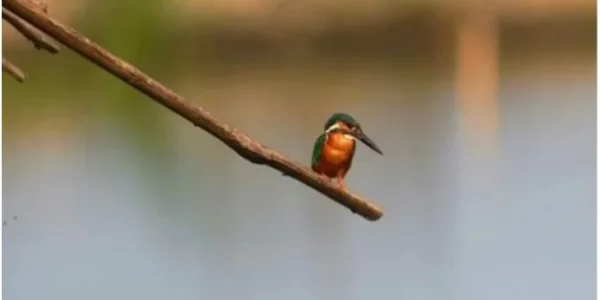
The White-Throated Kingfisher, also known as the White-Breasted Kingfisher, is a tree kingfisher, widely distributed in Asia including West Bengal. The White – Throated Kingfisher, also known as the White-Breasted Kingfisher, is a tree kingfisher, widely distributed in Asia including West Bengal. During the breeding season, they call loudly in the mornings from prominent perches including the tops of buildings in urban areas or on wires. It can often be found well away from water where it feeds on a wide range of prey that includes small reptiles, crabs, small rodents and even birds.
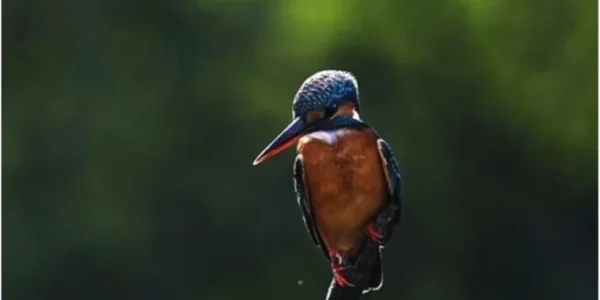
The White-Throated Kingfisher is the state bird of West Bengal. An adult White-Throated Kingfisher is approximately 27–28 cm in length. Its back, wings and tail are bright blue and head, shoulders, flanks and lower belly are chestnut coloured. It’s throat and breast are characteristically white. The large beaks are bright red as are its legs.
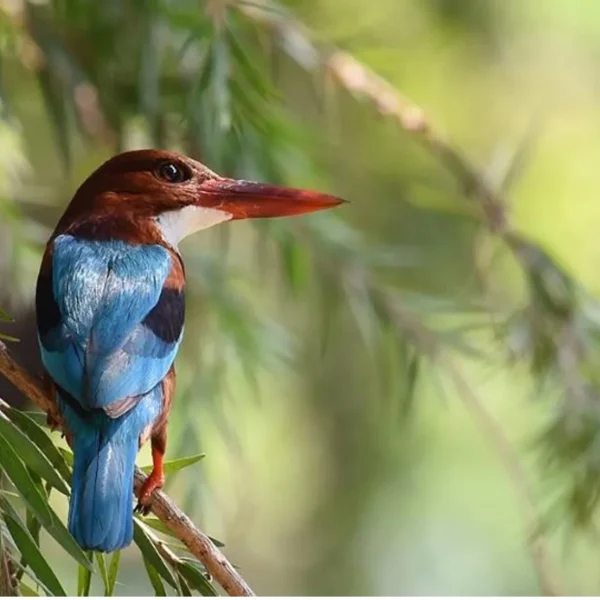

PURPLE SUNBIRD
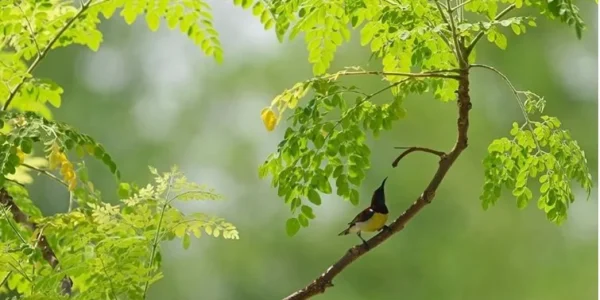
Sunbirds are small, slender birds, usually with downward-curved bills, and are brightly coloured, often with iridescent feathers, particularly in the males. There are many species (almost 145) and the diversity of the species is the highest in equatorial regions. Nectar is a primary food source and the long thin down-curved bills and brush tipped tubular tongues are perfectly adapted for nectar feeding from long and narrow tubular flowers. Though most sunbirds feed largely on nectar, they also eat insects and spiders, especially when feeding their young.
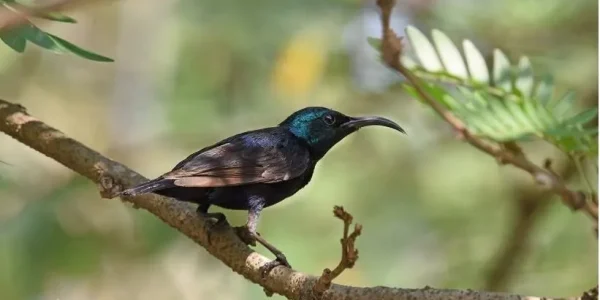
The Purple Sunbird is commonly found in West Bengal and they are significant pollinators of flowers. The male is glossy metallic bluish to purplish black on the upper parts with dark brown wings. Females are olive brown above with yellowish underside.

RED-CRESTED POCHARD
A large diving duck, the Red-Crested Pochard, has its breeding habitat in the lowland marshes and lakes in Southern Europe, which extends from the steppes and semi-desert areas on the Black Sea to Central Asia and Mongolia. It is somewhat migratory, and spends the winters in the Indian subcontinent and Africa, though the northern bird winters further south in North Africa.
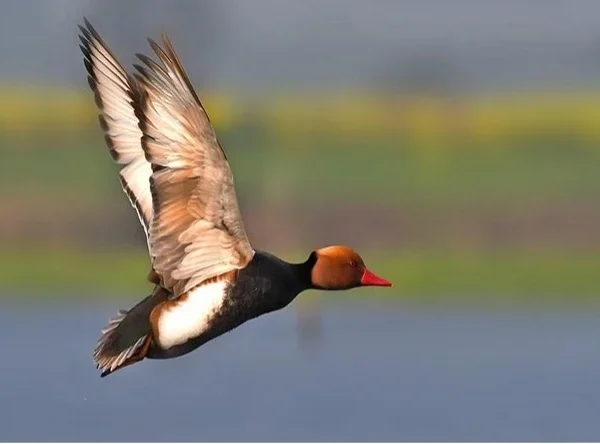
The adult male is unmistakable. It has a rounded orange head, red bill and black breast. The flanks are white, the back brown and the tail black. The female is mainly pale brown, with a darker back and crown and a whitish face. They are gregarious birds, forming large flocks in winter, often mixed with other diving ducks, such as Common Pochards. They feed mainly by diving or dabbling and eat aquatic plants.

GREBE
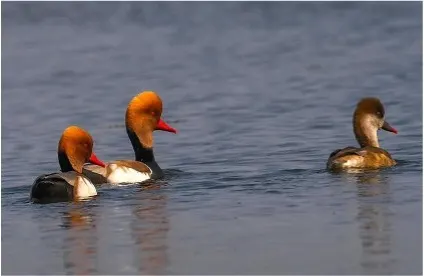
The Little Grebe, also known as Dabchick, is a member of the Grebe family of water birds. At 23 to 29cm (9 to 11 in) in length, it is the smallest member of its family. It is commonly found in open bodies of water across most of its range. The Little Grebe is a small water bird with a pointed bill. The adult can unmistakably be spotted in summer, with its predominant dark upper body, rich, rufous-coloured neck, cheeks and flanks, and bright yellow gape. The rufous is replaced by a dirty brownish grey in non-breeding and juvenile birds. Juvenile birds have a yellow bill with a small black tip which darkens as the juveniles age, eventually turning black in adulthood. In winter, its size, buff plumage, darker back and cap and ‘powder puff’ rear end enables one to identify it easily.
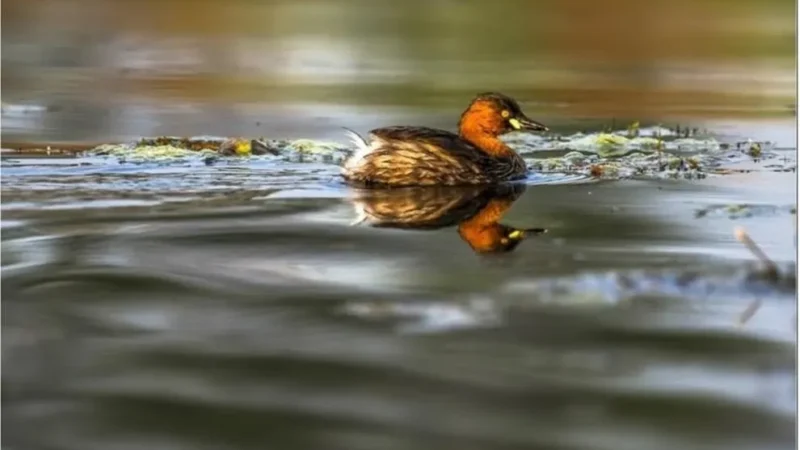
The Little Grebe is an excellent swimmer and diver and pursues its fish and aquatic invertebrate prey under water. It uses the vegetation skilfully as a hiding place. A resident bird of India, it is found quite commonly in West Bengal. Though a diver, it is not a duck as it lacks the webbed feet common to ducks.

*Dr. Tamal Kanti Roysarkar is an ophthalmologist, currently based in Dhaka.
Email: tamalroysarkar9311@gmailcom. Copyright for all photographs lies with the author and none can be reproduced without his consent.
